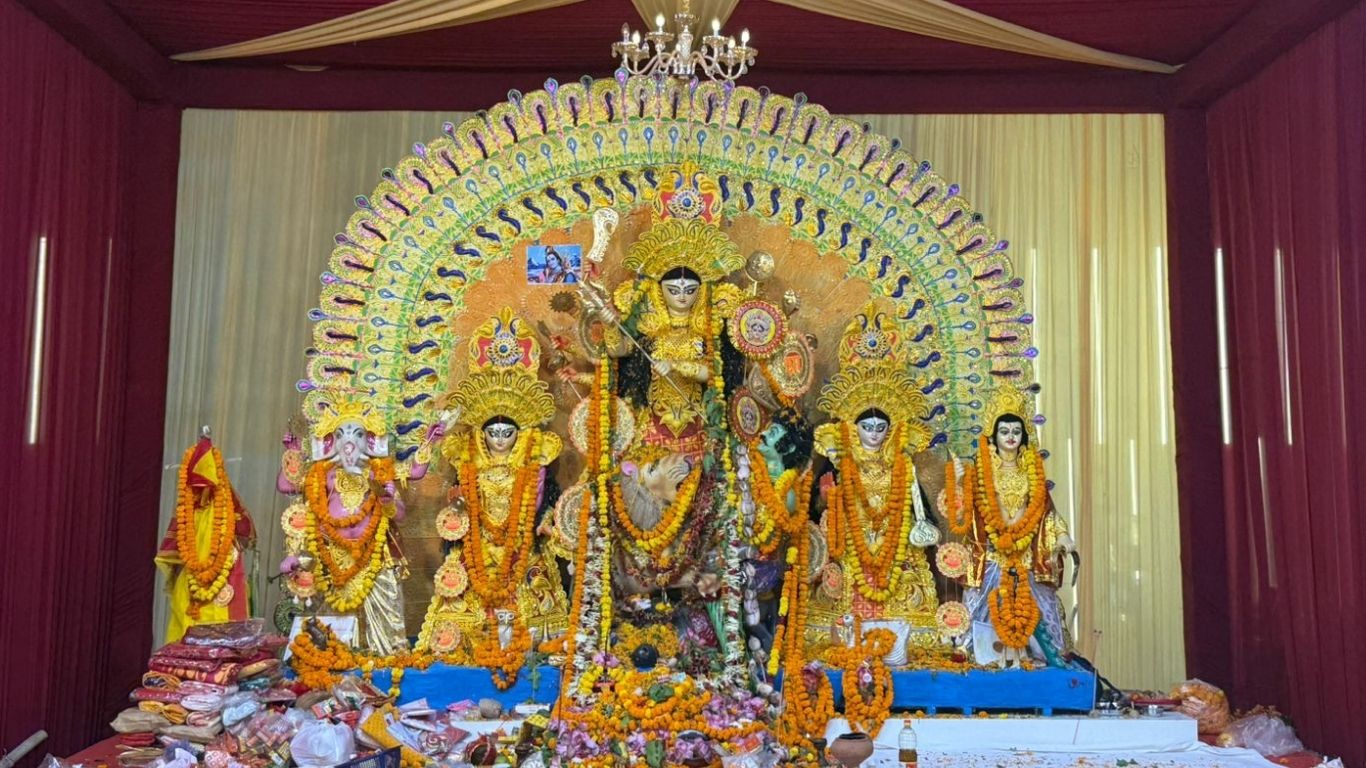
As the autumn moon waxes and the air fills with a distinct spiritual energy, India prepares for one of its most cherished festivals—Shubh Navratri. For nine nights and ten days, the divine feminine, Maa Durga, is worshipped in her myriad forms. Each day holds a unique significance, a specific color, and a story to tell. But nestled within this sacred period is a day of profound and explosive power: Navami.
Navami, the ninth day, is far more than just a date on the calendar. It is the spiritual crescendo of the festival, a day when the Goddess manifests in her most fierce and potent forms. As we look ahead to Shubh Navratri 2025, let's unveil the profound significance of Maha Navami and discover how to honor this powerful day. Here at ExploreRealNews.com, we're dedicated to bringing you not just the facts, but the deeper meaning behind our traditions. Let’s discover how to honor this powerful day with true understanding.
To understand Navami, we must first see Navratri as a journey. The first three days are dedicated to Goddess Durga, the destroyer of evil, who helps us dismantle our inner impurities. The next three days honor Goddess Lakshmi, who bestows the spiritual and material wealth needed for a balanced life. The final three days are for Goddess Saraswati, the source of ultimate knowledge and wisdom.
Navami sits at the pinnacle of this nine-day spiritual ascent. It is the day before the final victory—Vijayadashami. On this day, the devotional energy accumulated over the previous eight days reaches its peak. The Goddess is revered as Maha Durga or Maha Saraswati, a culmination of all her powers, ready to deliver the final blow to ignorance and evil. For the precise 2025 Navami muhurat timings and a detailed city-wise puja guide, stay tuned with ExploreRealNews.com. The day is primarily celebrated in three distinct ways across India, each revealing a different facet of the Goddess's power.
In 2025, the observance of Navami will be guided by the lunar calendar. The exact Muhurat (auspicious timing) will be crucial for observances. The day is primarily celebrated in three distinct ways across India, each revealing a different facet of the Goddess's power.
On Maha Navami, we worship Goddess Siddhidatri—the giver of all supernatural powers. Seated on a lotus, she is depicted with four arms, holding a mace, a discus, a lotus, and a conch. She is the final and most complete form of Durga.
This day is famously associated with the legend of Goddess Durga’s battle with Mahishasur. After a grueling nine-day fight, it was on Navami that the demon was finally vanquished. This symbolizes the ultimate victory of good over evil, a theme that resonates deeply within our own lives. It represents the moment we overcome our most stubborn internal demons—be it ego, anger, or greed.
In Southern India, particularly in Karnataka, Tamil Nadu, and Andhra Pradesh, Navami is celebrated as Ayudha Puja. This is a uniquely humanizing tradition where the divine is seen in the everyday.
On this day, people clean and worship the instruments of their livelihood. From the farmer’s plough and the artist’s brush to the engineer’s laptop and the mechanic’s tools, every object that helps us build, create, and sustain our lives is adorned with flowers, sandalwood paste, and turmeric. This ritual is a powerful reminder that any tool, when used with purity of intention and skill (a form of Saraswati’s blessing), becomes sacred. It blurs the line between the spiritual and the material, infusing our daily work with a sense of divine purpose.
In Northern India, Navami is intricately linked to the epic Ramayana. This is the day when Maa Saraswati, the goddess of knowledge and music, is also worshipped, as she is believed to bless the arts and learning.
Furthermore, in the ongoing Ramlila performances, Navami often marks the dramatic climax of the battle between Lord Rama and the demon king Ravana. It is a day charged with the anticipation of victory. In some regions, it is also the day of Bali Daan (sacrificial offering), symbolizing the surrender of the ego and the sacrifice of negative tendencies, paving the way for the victory of Vijayadashami.
So, how can we, in our modern lives, connect with the potent energy of Navami during Shubh Navratri 2025?
Navami is not merely a pause in the Navratri festivities; it is their beating heart. It is the day we acknowledge that the true battle is within, and the ultimate victory is self-mastery. As we celebrate Shubh Navratri 2025, let us move beyond ritual and truly embrace the power of Navami. Let it be the day we arm ourselves with divine strength, sanctify our daily work, and sacrifice our inner demons, so that we may step into Vijayadashami not just as celebrants, but as truly victorious souls.
We at ExploreRealNews.com wish you a blessed and powerful Navratri. May this festival bring you peace, prosperity, and spiritual victory. For more content that connects faith with modern life, bookmark our site and join our community of mindful readers.